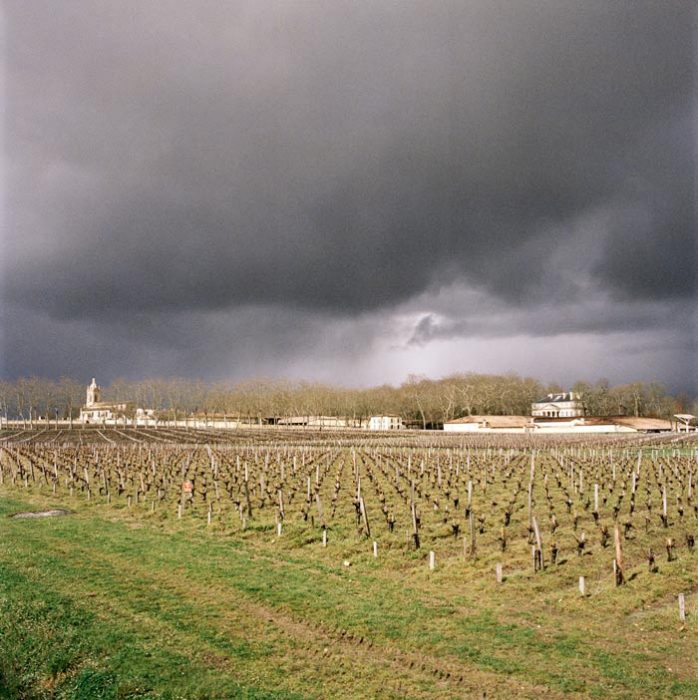What makes a great vintage?
Author: Mark Pardoe MW

Winemakers everywhere have one eye permanently on the weather: storms at the wrong time can destroy an entire vintage. In spring, as here in Bordeaux, frost can kill the emerging buds, or a hailstorm can strip them right off. Photograph: Jason Lowe
Sometimes Bordeaux is even busier than usual for the “en primeur” tastings, because the word is out that it’s a great vintage. For the Anglophone, “vintage” is a problematic word, with its connotations of age and venerability; but in its original French, and in use throughout the wine trade, it just means the production of a single, identified year.
The creation of any wine is the culmination of an agricultural process. Each autumn, grapes ripen on vines, are harvested and then turned into wine. The quality of that wine depends on where those vineyards are situated, and on what the weather did that year.
The success of any given vintage will depend on the ripeness of the grapes – not just in terms of sugar levels, but how the tannins and acidities have “ripened” as well. Unripe tannins make red wines too bitter; unripe (high) acidity shows as sharpness.
The ideal time to harvest is when all these elements are in prime condition – but a cool spring or a wet August may mitigate success, and so the skill of the vigneron is to judge the moment to pick, to maximize success.
In regions with reliable and predictable weather patterns, the variations can be less marked; but more marginal regions, where the grapes creep more slowly towards full maturity, demonstrate greater variations. This gentle, final fulfilment of maturity is also vital for the accumulation of complexity in the final product.
On a broader scale, the vintage is the measure of a wine’s age. Some wines require maturation to show all that they are capable of, and the length of maturation will depend on the quality and style of the vintage. Other wines demand enjoyment earlier in their life-cycle. The knowledge of the vintage is the key to this fulfilment.
Technical understanding of both grape-growing and winemaking is now at such a level that the concept of a poor year is becoming almost (but not quite) inconceivable. Certainly the big names of the wine world are in a position of such security that the sacrifices necessary to discard any fruit deemed unsuitable are well within their compass, so that whatever is produced will be worthy of the name.
So, what is a “great” vintage? It is one where all these elements have come together under near-ideal conditions. But great vintages are not normal vintages; it would be more accurate to label them as “exceptional”, as they only tend to occur two or three times per decade.
For the rest of the time, any wine’s true personality is better expressed by the more frequent “lesser” vintages. These may be marked by a greater or lesser perception of some of the wine’s typical characteristics, but all should be treated as representative of each wine’s heritage.
Fundamentally, every wine that is produced, great or small, is an expression of one year in time – a snapshot of history and a reflection of life and its vicissitudes.
Find out more about the world of wine at one of our events.



We are looking at an exceptional year here in Daylesford Macedon – by all accounts it could be the first non-even year (as in 2008, 10, 12 etc.) to break the mould. Fingers crossed for the hard work! Clay Watson – Daylesford Wine Tours.